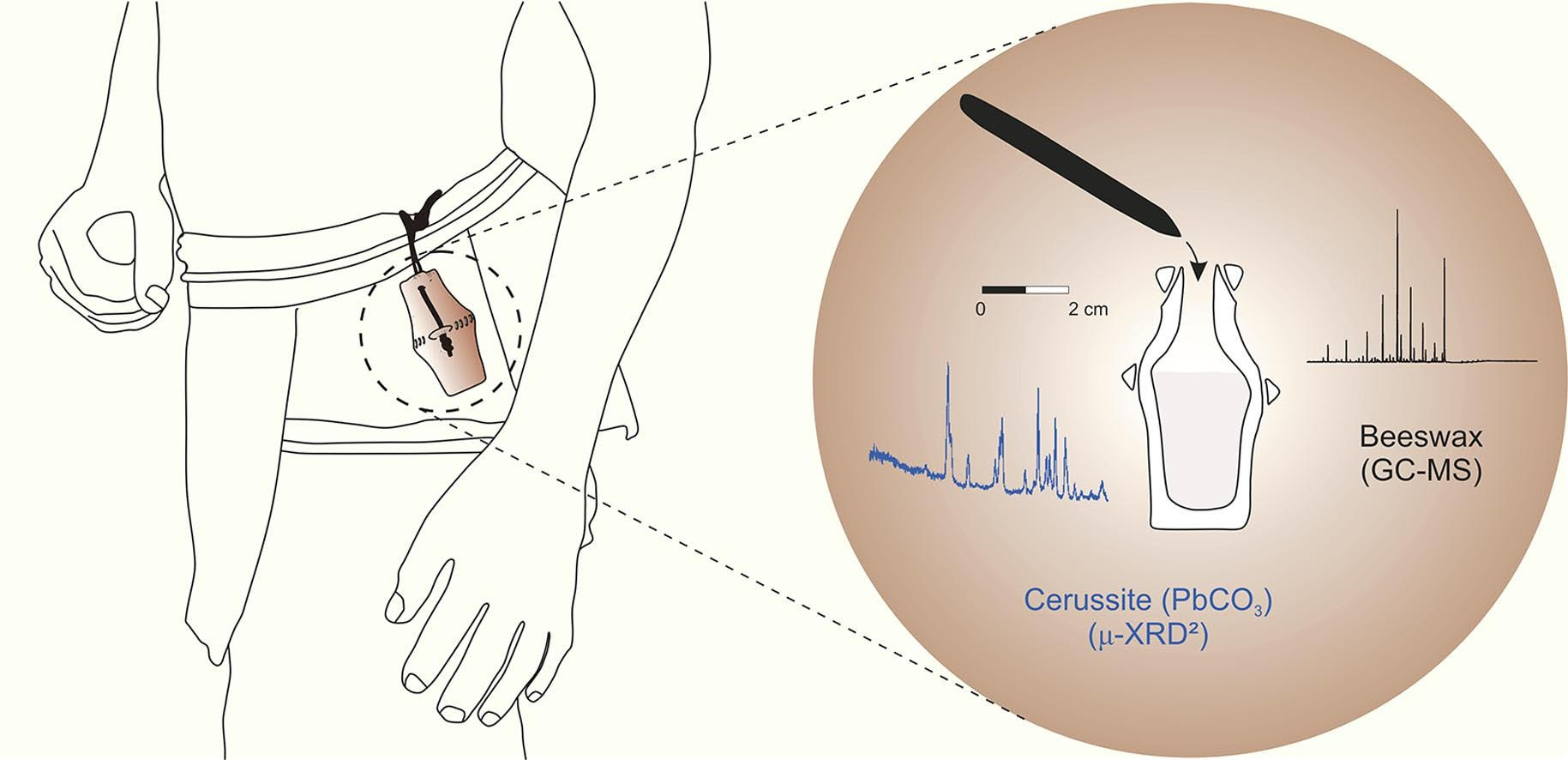It was thought that the first use of lead-based compounds as pigments in cosmetics occurred in Mesopotamia and Egypt in the late 4th millennium BC.
Ancient Europe was comparatively late to the make-up game, with the earliest previously-discovered formulations dating to around the 2nd millennium BC.
However, content analysis of miniature ceramic bottles found in modern-day Slovenia suggests that such practices could have been carried out as early as the second half of the 5th millennium BC – pushing back the use of cosmetics in Europe by two millennia.
In a study published by Bine Kramberger et al. in August’s Journal of Archaeological Science: Reports, 14 Late Stone Age and Early Chalcolithic bottles were tested, with cerussite (lead carbonate) identified as the main component of a white material found in one bottle, while visible residues in two other bottles were found to be the lead minerals plumbogummite and pyromorphite.
The further use of lipid analysis identifying beeswax in three of the vessels, together with lead minerals in the same vessels, the researchers said, suggests that the small bottles could have been used to carry rudimentary pigmented cosmetics or medicines, in a similar fashion to the known use of lead-based cosmetics in ancient Mesopotamia and Egypt, only much earlier.
Traces of other potential cosmetic bases, including plant oil and animal fat, were also discovered.

The first vessel was discovered by Kramberger, an archaeologist at the Institute for the Protection of Cultural Heritage of Slovenia, in 2014, in Zgornje Radvanje, Slovenia – a site once populated by the Lasinja people, who were descendants of hunter-gatherers in Western Europe.
More than 100 similar bottles have since been unearthed around the southeastern foothills of the Alps (attributed to the Lasinja) and the central Balkans, once home to the Vinča culture.
Due to their size, they were originally assumed to be children’s toys, or to have been used for their symbolic value.
Holes in the vessels’ necks indicate that they were tied with string or leather to be worn around the neck or waist.
While the researchers noted that the sample size tested was not enough to support a broad hypothesis, they believe it is likely that the bottles were used as containers for valuable materials – like early cosmetics – rather than as toys.
